Before there was Silicon Valley, there was an expanse of blossoming fruit trees known as the Valley of Heart’s Delight. A local hardware chain, the aptly named Orchard Supply Hardware, began in 1931 as a farmers’ cooperative. Mountain View is now home to Google and a hub of Silicon Valley activity, but in a 1995 interview, Apple Computer founder Steve Jobs recalled moving into the town as a child in the 1960s: “Silicon Valley for the most part at that time was still orchards – apricot orchards and prune orchards – and it was really paradise. I remember the air being crystal clear, where you could see from one end of the valley to the other.”
That too is the Silicon Valley I remember. Cloudless blue skies only occasionally blurred by morning fog (never smog), sunny days and chilly nights. Southern California was the land of citrus, but the orchards of Santa Clara valley grew a variety of stone fruit. I’d go with my mom to the local farm stands and diligently pick the firmest, darkest Bing cherries one by one, knowing that unlike most fruits it was the hardest cherries that were the sweetest. I’d gorge on delicate Blenheim apricots by the dozen, their slightly tart peels holding the most delicious soft jammy fruit. I loved the deeply purple Italian prune plums, their shape more oval than regular plums and their bright yellow flesh sweeter.
Today the stone fruit trees are all but gone, and oddly enough the legacy of the orchards is found not in stone fruit but in a lemon-orange hybrid brought to the U.S. from China in the early 1900s by US Department of Agriculture scout Frank Meyer. The aromatic Meyer lemon – sweeter, rounder and juicier than the standard type – serves as the present-day reminder of the valley’s fruit-filled past.
In much of the country Meyer lemons, if they can be found at all, sell for exorbitant prices as an unusual novelty. But here in Silicon Valley mature Meyer lemon shrubs and trees are found in many backyards, their abundant fruit mostly falling to the ground unused by their busy technology-industry owners.
The Wall Street Journal had a fascinating piece last fall about the foraging trend in and around San Francisco. The resourceful chinese grandma in me loves the concept – locate and harvest wild foods growing in public spaces so they don’t go to waste. Someone could make an comfortable living foraging for Meyer lemons in Silicon Valley…if only they could find a way around the small issue of trespassing.
I do my small part by foraging in my brother’s yard. He’s a computer engineer, rarely goes into his backyard and never picks his Meyer lemons unless specifically requested by me or my mom. Easier for us is to slip through his gate during the day while he’s at work and help ourselves.
I’ve been hoarding my foraged stash of lemons this summer, but now that I’m only a week away from returning to Ohio, it’s time to start using them up. Life gave me a treasure trove of lemons. I’m making lemonade.
You don’t need Meyer lemons to make great lemonade. In fact, you don’t even need fresh lemons. Costco sells a liter of organic Sicilian lemon juice for $4, which is my lemonade-making standby in Ohio. One green glass bottle makes 4-8 gallons of lemonade, a favorite among the 13 cousins (and many parents) at family gatherings. Even made from bottled lemon juice, real lemonade is infinitely better than juice boxes or soda, and much cheaper to boot.
Homemade lemonade is a humble drink – a little juice, some sugar and a lot of water – but a cold glass of fresh lemonade is invariably hailed by guests as a spectacular treat. It’s a small effort for a refreshing taste of old-fashioned summertime.
I don’t have a real pitcher in my California galley kitchen, so I enlisted my french press for pitcher duty.
Meyer lemons are generally thinner-skinned than regular lemons.
They are really easy to juice, more like oranges.
I’m too lazy to make a simple syrup first. It seems like such a hassle to heat the sugar and water and wait for it to cool. I find if I mix the lemon juice and sugar with enough room-temperature water, it dissolves well enough. It’s important to add ice last, because sugar won’t dissolve in ice-cold water.
If I had my 2-quart pitcher, I’d fill the rest up with ice. But since I only have my french press, I’m going to serve it over a full glass of ice and wait for it to melt a bit. I think mint adds an extra-refreshing boost, but the kids like it even more without.
If you really want to get fancy, you can blend it up like a green slushy. My kids take their lemonade straight up or blended with strawberries. Green is out of the question.
For the next week, I’m going to drink lemonade, savor the cool breeze of California and hope to goodness that fall comes quickly to Ohio.
Related links
- San Jose’s Historic Orchard, established in 1994 – three acres of 200 fruit trees to recall the Valley of Heart’s Delight
- California Citrus Park in Riverside, CA
- “The Meyer Lemon: More Than a Pretty Face,” at npr.com
- Mint lemonade at tasteofbeirut.com
Lemonade with Mint
A small effort for a refreshing taste of old-fashioned summertime. Taste preferences vary with lemonade, so I’m including a few variations here – experiment to see what works best for you. Use fresh-squeezed lemons or good-quality lemon juice.
Ingredient measurements are based on a 2-quart/liter container, which is 8 cups.
Light and sweet (kids version; most similar to commercial lemonades)
- 1/2-3/4 cup lemon juice
- 1 cup sugar
- Water to mix
- Ice to fill
- Fresh mint
Tart and sweet
- 1 cup lemon juice
- 1 cup sugar
- Water to mix
- Ice to fill
- Fresh mint
Tart
- 1 cup lemon juice
- 1/2 cup sugar
- Water to mix
- Ice to fill
- Fresh mint
Directions
- Add lemon juice and sugar to a 2-liter pitcher. Fill with water to 1/3 or 1/2 the container. Mix until sugar is completely dissolved. Add ice to fill.
- Serve over ice, with mint sprigs as desired.
Notes
- I find the sugar dissolves well enough as long as the water isn’t too cold. But the best method to ensure that the sugar mixes in completely is to make a simple syrup first. If you have time, heat sugar with the same amount of water, stirring until sugar is dissolved. Let cool before adding to the lemonade.
- Costco sells a fantastic organic Sicilian lemon juice – 1 liter in a green glass bottle for $4. It’s a great deal.
- For a more pronounced mint flavor, add a generous amount of mint leaves with the lemon juice and sugar. Use a wooden spoon or muddler to crush the leaves as you mix. Then add water to mix and ice to fill as directed.
- Lemonade mixed in the blender with mint or fruit and a bit of extra ice is a nice variation. Strawberry lemonade is a particular favorite in my house. You may need a bit of extra sugar depending on the sweetness of your fruit.
Here’s the link to a printable version.

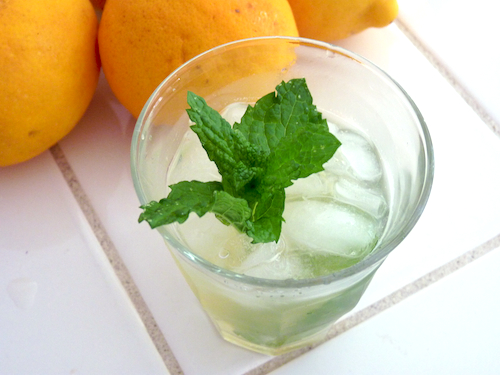
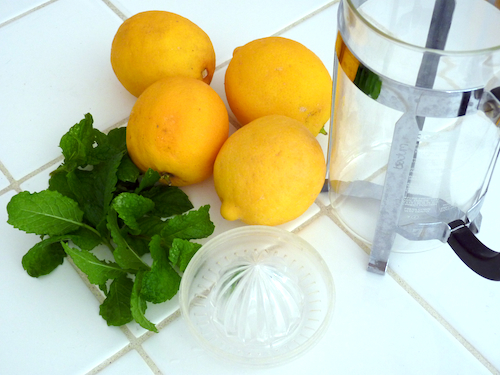
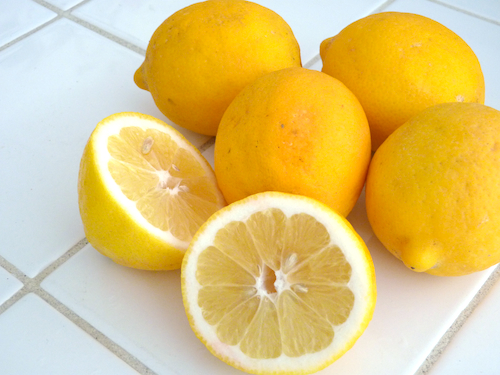
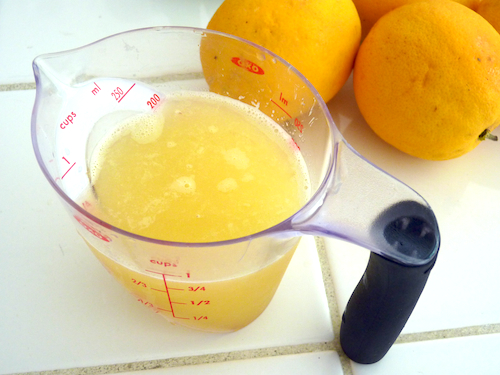
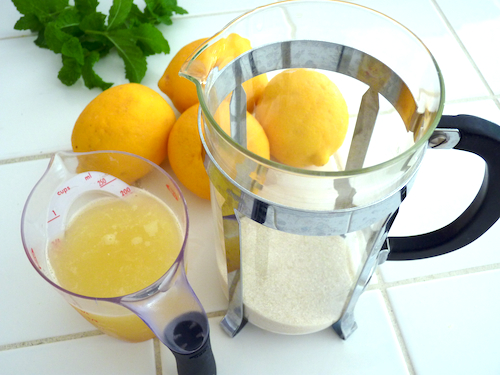
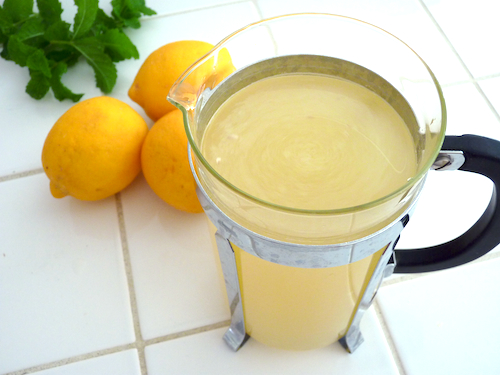




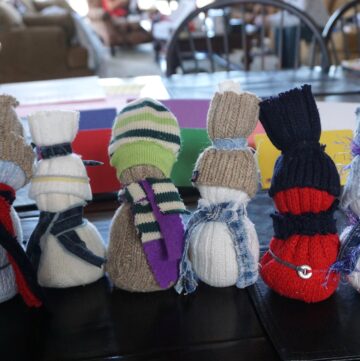
Ahh, so those *are* Meyer lemons in my backyard… 🙂 We have a smallish but productive tree that fits your exact description. Sadly, we are those Silicon Valley tech people who take these beautiful specimens for granted… but no more! We do use for cooking, but were never inspired enough to actually make lemonade until now! Looking forward to trying it out with the kids this weekend 😀 And if you’re in the Mountain View area and need some more lemons to take back, come on by 😉
That lemonade with mint looks fabulous! By the way, I also grew up with a Blenheim Apricot tree in the backyard… heavenly! They are getting so hard to find, and no other apricot even comes close.
hi hapamama – lucky you, growing up with a tree! i ate so many apricots one summer i got hives. but still didn’t turn me off…blenheim apricots are irresistible.